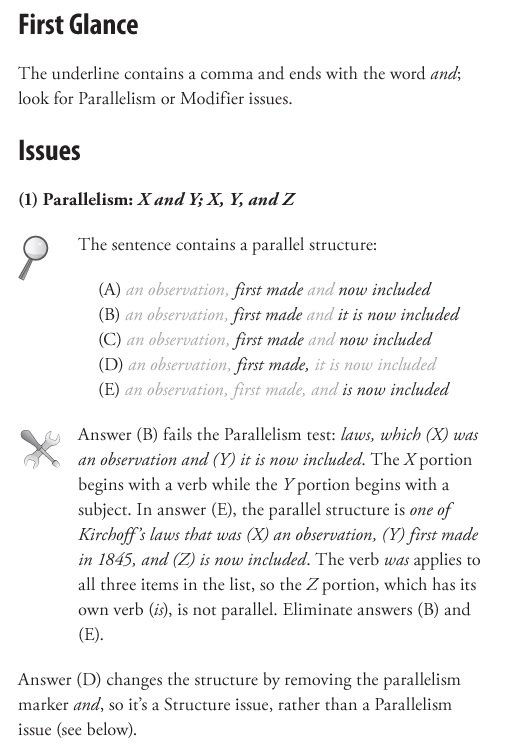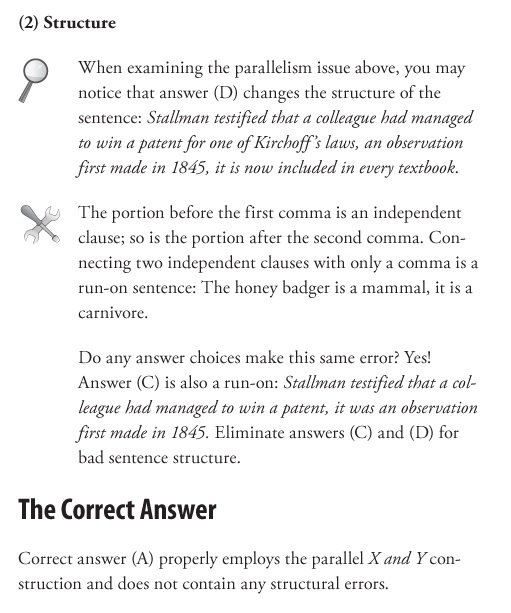Events & Promotions
|
|

GMAT Club Daily Prep
Thank you for using the timer - this advanced tool can estimate your performance and suggest more practice questions. We have subscribed you to Daily Prep Questions via email.
Customized
for You
Track
Your Progress
Practice
Pays
Not interested in getting valuable practice questions and articles delivered to your email? No problem, unsubscribe here.
- Nov 19
12:30 PM EST
-01:30 PM EST
Learn how Keshav, a Chartered Accountant, scored an impressive 705 on GMAT in just 30 days with GMATWhiz's expert guidance. In this video, he shares preparation tips and strategies that worked for him, including the mock, time management, and more - Nov 20
07:30 AM PST
-08:30 AM PST
Learn what truly sets the UC Riverside MBA apart and how it helps in your professional growth - Nov 20
01:30 PM EST
-02:30 PM IST
Learn how Kamakshi achieved a GMAT 675 with an impressive 96th %ile in Data Insights. Discover the unique methods and exam strategies that helped her excel in DI along with other sections for a balanced and high score. - Nov 22
11:00 AM IST
-01:00 PM IST
Do RC/MSR passages scare you? e-GMAT is conducting a masterclass to help you learn – Learn effective reading strategies Tackle difficult RC & MSR with confidence Excel in timed test environment - Nov 23
11:00 AM IST
-01:00 PM IST
Attend this free GMAT Algebra Webinar and learn how to master the most challenging Inequalities and Absolute Value problems with ease. - Nov 24
07:00 PM PST
-08:00 PM PST
Full-length FE mock with insightful analytics, weakness diagnosis, and video explanations! - Nov 25
10:00 AM EST
-11:00 AM EST
Prefer video-based learning? The Target Test Prep OnDemand course is a one-of-a-kind video masterclass featuring 400 hours of lecture-style teaching by Scott Woodbury-Stewart, founder of Target Test Prep and one of the most accomplished GMAT instructors.
Originally posted by sandalphon on 06 Nov 2005, 07:19.
Last edited by Bunuel on 22 Oct 2021, 01:41, edited 2 times in total.
Last edited by Bunuel on 22 Oct 2021, 01:41, edited 2 times in total.
Renamed the topic and edited the question.
Kudos
Bookmarks
A
Be sure to select an answer first to save it in the Error Log before revealing the correct answer (OA)!
Difficulty:
 55%
(hard)
55%
(hard)
Question Stats:
63% (01:50) correct 37%
(02:02)
wrong
37%
(02:02)
wrong  based on 13052
sessions
based on 13052
sessions
History
Date
Time
Result
Not Attempted Yet
In 1995 Richard Stallman, a well-known critic of the patent system, testified in Patent Office hearings that, to test the system, a colleague of his had managed to win a patent for one of Kirchhoff's laws, an observation about electric current first made in 1845 and now included in virtually every textbook of elementary physics.
(A) laws, an observation about electric current first made in 1845 and
(B) laws, which was an observation about electric current first made in 1845 and it is
(C) laws, namely, it was an observation about electric current first made in 1845 and
(D) laws, an observation about electric current first made in 1845, it is
(E) laws that was an observation about electric current, first made in 1845, and is

01.jpg [ 103.43 KiB | Viewed 95330 times ]

02.jpg [ 96.13 KiB | Viewed 95203 times ]
MIT's Technology Review - Page 120
https://books.google.com.my/books?id=ZZPpAAAAMAAJ
1899
Richard Stallman, a founding member of the League for Programming Freedom, reported last year that, in an effort to test the system, a colleague succeeded in winning a patent on Kirchhoff's
(A) laws, an observation about electric current first made in 1845 and
(B) laws, which was an observation about electric current first made in 1845 and it is
(C) laws, namely, it was an observation about electric current first made in 1845 and
(D) laws, an observation about electric current first made in 1845, it is
(E) laws that was an observation about electric current, first made in 1845, and is
Attachment:
01.jpg [ 103.43 KiB | Viewed 95330 times ]
Attachment:
02.jpg [ 96.13 KiB | Viewed 95203 times ]
MIT's Technology Review - Page 120
https://books.google.com.my/books?id=ZZPpAAAAMAAJ
1899
Richard Stallman, a founding member of the League for Programming Freedom, reported last year that, in an effort to test the system, a colleague succeeded in winning a patent on Kirchhoff's
Kudos
Bookmarks
Quote:
The biggest thing that jumps out at me here is the word "and." Something has to be parallel with the phrase that follows the word "and." And I think we're in good shape: "... one of Kirchhoff's laws, an observation about electric current first made in 1845 and now included in virtually every textbook of elementary physics." Cool, "first made in 1845" and "now included in virtually every textbook" both modify "an observation about electric current" -- and that makes perfect sense.
So let's keep (A).
Quote:
The "which" jumps out at me first in (B): "which was an observation..." modifies "one of Kirchoff's laws." That's OK, though we probably don't really even need the phrase "which was." It's not a big deal, but (A) is more succinct because it skips those extra couple of words. That's not a definite error, but it's a mild reason to prefer (A) over (B).
The bigger problem is the parallelism. Following the "and", we have a brand-new clause: "it is now included in virtually every textbook..." But I don't think that the clause is logically parallel to anything. And more importantly: there's no good reason to start a brand-new clause here, partly because we're just trying to describe the observation, so a simple modifier would be cleaner than a brand-new clause.
So (B) isn't a complete disaster, but it's definitely not as good as (A).
Quote:
This is a classic comma splice:
- Independent clause #1: "In 1995 Richard Stallman, a well-known critic of the patent system, testified in Patent Office hearings that, to test the system, a colleague of his had managed to win a patent for one of Kirchhoff's laws..."
- Independent clause #2: "...it was an observation about electric current first made in 1845 and now included in virtually every textbook of elementary physics."
Those two independent clauses are separated by only a comma, and that's not cool. (Commas and comma splices are very briefly discussed in this YouTube video on GMAT punctuation if you're curious to learn more about that crap.) So we can eliminate (C).
Quote:
(D) has basically the same comma splice problem as (C):
- Independent clause #1: "In 1995 Richard Stallman, a well-known critic of the patent system, testified in Patent Office hearings that, to test the system, a colleague of his had managed to win a patent for one of Kirchhoff's laws..."
- Independent clause #2: "...it is now included in virtually every textbook of elementary physics."
So (D) is out, too.
Quote:
(E) isn't a total disaster, but it's definitely not as good as (A).
For starters, I'm not sure why we would say something like "...one of Kirchoff's laws that was an observation about electric current..." First, there's no good reason to emphasize the past tense in this case: sure, the observation was first made in the past, but there's no good reason to suggest that the law itself somehow existed only in the past -- and that's exactly what seems to be happening in (A). Second, the phrase "one of Kirchoff's laws that was an observation about electric current" suggests that Kirchoff had other laws that were NOT about electric current, and we have no idea if that's actually the case.
The other problem is the placement of the modifier "first made in 1845." This is subtle and annoying, but because "first made in 1845" is surrounded by commas (an appositive phrase, if you like grammar jargon), it seems to modify ONLY the preceding noun, "electric current." So if we think about the sentence strictly and literally, it's saying that electric current was first made in 1845, and that's really not what the sentence is trying to say -- it's trying to say that the observation was first made in 1845, not the electric current itself.
So (E) can be eliminated, and (A) is the best we can do.
Kudos
Bookmarks
B/w A and E. I will go with A.
Removing the middle man:
In 1995 Richard Stallman testified in Patent Office hearings that a colleague of his had managed to win a patent for one of Kirchhoff's laws, an observation about electric current first made in 1845 and now included in virtually every textbook of elementary physics.
(A) laws, an observation about electric current first made in 1845 and
(B) laws, which was an observation about electric current first made in 1845 and it is
The restrictive WHICH is not matched with LAWS. in addition, was an observation indicates that this observation was in past and no longer exists. I think it is still a law . No referrent for IT in the end. Incorrect.
. No referrent for IT in the end. Incorrect.
(C) laws, namely, it was an observation about electric current first made in 1845 and
Similar to B. namely, it was an is wordy. Incorrect.
(D) laws, an observation about electric current first made in 1845, it is
No referrent for IT. Incorrect.
(E) laws that was an observation about electric current, first made in 1845, and is
Similar to B. No clear sunject for IS - The patent or one of the LAWS (Plural). Incorrect.
Removing the middle man:
In 1995 Richard Stallman testified in Patent Office hearings that a colleague of his had managed to win a patent for one of Kirchhoff's laws, an observation about electric current first made in 1845 and now included in virtually every textbook of elementary physics.
(A) laws, an observation about electric current first made in 1845 and
(B) laws, which was an observation about electric current first made in 1845 and it is
The restrictive WHICH is not matched with LAWS. in addition, was an observation indicates that this observation was in past and no longer exists. I think it is still a law
(C) laws, namely, it was an observation about electric current first made in 1845 and
Similar to B. namely, it was an is wordy. Incorrect.
(D) laws, an observation about electric current first made in 1845, it is
No referrent for IT. Incorrect.
(E) laws that was an observation about electric current, first made in 1845, and is
Similar to B. No clear sunject for IS - The patent or one of the LAWS (Plural). Incorrect.
















